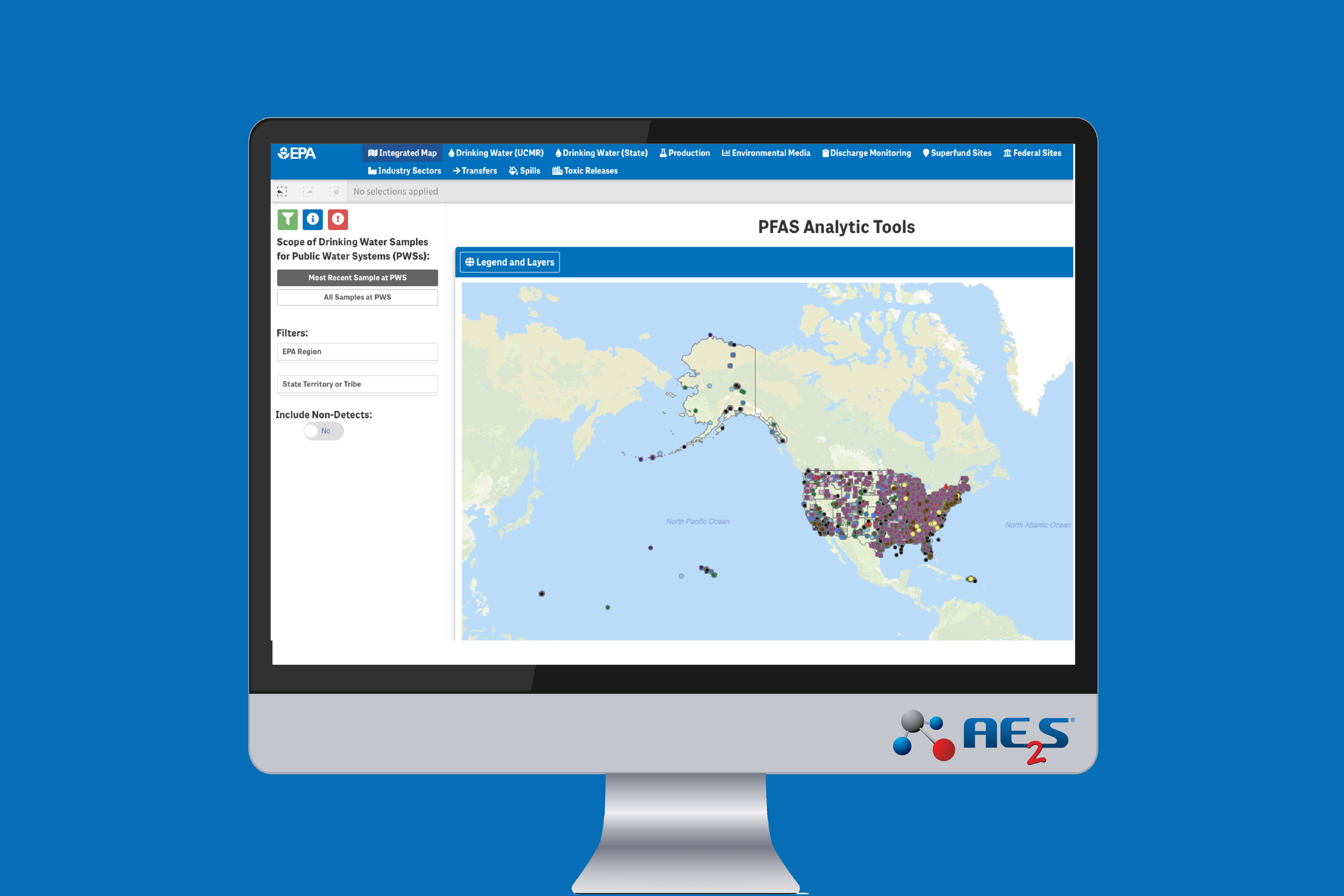The U.S. Environmental Protection Agency (USEPA) has released a new interactive webpage, called the “PFAS Analytic Tools,” which provides information about per- and polyfluoroalkyl substances (PFAS) across the country. The information will help the public, researchers, and other stakeholders better understand potential PFAS sources in their communities. The PFAS Analytic Tools bring together multiple sources of information in one spot with mapping, charting, and filtering functions, allowing the public to see where testing has been done and what level of detections were measured.
The PFAS Analytic Tools draw from multiple national databases and reports to consolidate information in one webpage. The PFAS Analytic Tools includes information on:
- Clean Water Act PFAS discharges from permitted sources
- Reported spills containing PFAS constituents
- Facilities historically manufacturing or importing PFAS
- Federally owned locations where PFAS is being investigated
- Transfers of PFAS-containing waste
- PFAS detection in natural resources such as fish or surface water
- Drinking water testing results
The tools cover a broad list of PFAS and represent USEPA’s ongoing efforts to provide the public with access to the growing amount of testing information that is available.
Rather than waiting for complete national data to be available, the USEPA is publishing what is currently available while data collection continues. Users should be aware that some of the datasets are complete at the national level, whereas others are not. For example, USEPA has included a national inventory for drinking water testing at larger public water utilities. That information was provided between 2013-2016. To include more recent data, USEPA also compiled other drinking water datasets that are available online in select States. For the subset of States and Tribes publishing PFAS testing results in drinking water, the percentage of public water supplies tested vary significantly from State to State. Because of the differences in testing and reporting across the country, the data should not be used for comparisons across cities, counties, or states.
To improve the availability of the data in the future, USEPA has published its fifth Safe Drinking Water Act Unregulated Contaminant Monitoring Rule to expand on the initial drinking water data reporting that was conducted in 2013-2016. Beginning in 2023, this expansion will bring the number of drinking water PFAS samples collected by regulatory agencies into the millions. USEPA also significantly expanded the Toxics Release Inventory reporting requirements in recent years to over 175 PFAS substances — and more information should be received in 2023. Additionally, USEPA’s proposal to designate PFOA and PFOS as Hazardous Substances would also improve data on spill or release incidents reported to the Emergency Response Notification System. These reporting enhancements are planned to be incorporated into future versions of the interactive webpage.

